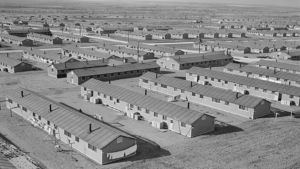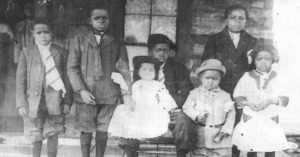A recently-published book outlining 11 years of research by multiple teams aims to put weight behind a leading theory for the colony of Roanoke’s supposed disappearance, putting to bed centuries of wild speculation.
It’s a “mystery” older than the United States and one every American kid learns in school. British settlers attempted to settle on Roanoke Island off the coast of North Carolina in 1587. The colony’s supplies were low and some of the settlers went on a resupply mission. Delayed by harsh weather, they returned in 1590 to find an empty island devoid of settlers. The homes were empty, some of the chores seemingly abandoned mid-action. There were no bodies, just one word carved into a tree: “CROATOAN.”
The missing settlers were never found, but a new book outlines a wealth of evidence that would confirm the leading theory of what happened to them.
The Lost Colony and Hatteras Island by local historian Scott Dawson confirms what was always the most likely story, but which has existed alongside a wealth of wild speculation for centuries: the Roanoke settlers, running low on supplies, went to live with the friendly Indigenous people on nearby Hatteras island. The “mysterious” sign turned out to be no mystery at all: the tribe on the island was called the Croatoans.
The book outlines 11 years of research conducted by the Croatoan Archaeological Society, which Dawson co-founded with his wife Maggie, and multiple other teams of archaeologists, historians, botanists, geologists, and other researchers in the North Carolina area. Archaeologists from the University of Bristol in England, assisted by anthropologists from the University of Michigan, began to dig in the area more than a decade ago. Once the digging started, the Dawsons founded the Society and began to assist.
The mystery of what happened to the Roanoke colony has fueled speculation and pop culture for hundreds of years. Science fiction writer Harlan Ellision referenced the colony, Stephen King included it as backstory for his TV miniseries Storm of the Century, Batman and Superman comics referenced the colony, and the disappearance of the settlers was the basis for American Horror Story’s sixth season.
The cultural fantasies and explanations of the Lost Colony aren’t all benign. One theory, particularly insulting and ironic given the evidence in The Lost Colony and Hatteras Island, holds that the settlers were slaughtered by Indigenous neighbors.
The term “lost colony” itself was popularized in an 1837 magazine story that introduced the overarching mythos of Virginia Dare, the first English child born on American shores and who was from Roanoke and vanished with her fellow settlers. As the first “white child” born in the New World, she’s become a potent symbol among white nationalists, in addition to being the main character of many Roanoke stories.
According to Scott Dawson, author of The Lost Colony and Hatteras Island, these legends are just myths that cover up a very simple explanation. “They were never lost. It was made up. The mystery is over,” he told The Virginian-Pilot.
For more than a decade, teams of researchers and archaeologists have unearthed sites on Roanoke Island in North Carolina that support the theory that the Lost Colony integrated into the indigenous population.
In 2015, National Geographic detailed a new find of broken English bowls, a sword hilt, and the fragment of a writing tablet mixed among the remains of Croatoan Indians on Hatteras island. “The evidence is that they assimilated with the Native Americans but kept their goods,” Mark Horton, an archaeologist at Britain’s Bristol University, told National Geographic. The Dawsons and their organization have sponsored Horton’s work and made discoveries of their own.
Given this mounting archaeological evidence, gathered and explained in Dawson’s book, it’s incredible how long wild theories have persisted. Even in 1590, people assumed that the settlers had gone to live with the indigenous people. It was a common occurrence at the time for settlers to join indigenous tribes and integrate into them. The English even mounted a “rescue party” to find the settlers but bad weather prevented the shim from reaching Hatteras Island. Explorer John Lawson visited the island in 1701 and reported that several of the Hatteras people claimed “several of their ancestors were white people.”
Dawson’s book, which was published in June, isn’t the final word on Roanoke, but it does summarize a decade of archaeological evidence that seeks to end a persistent American myth.
“You’re robbing an entire nation of people of their history by pretending Croatoan is a mystery on a tree,” Dawson told The Virginian-Pilot. “These were a people that mattered a lot.”




